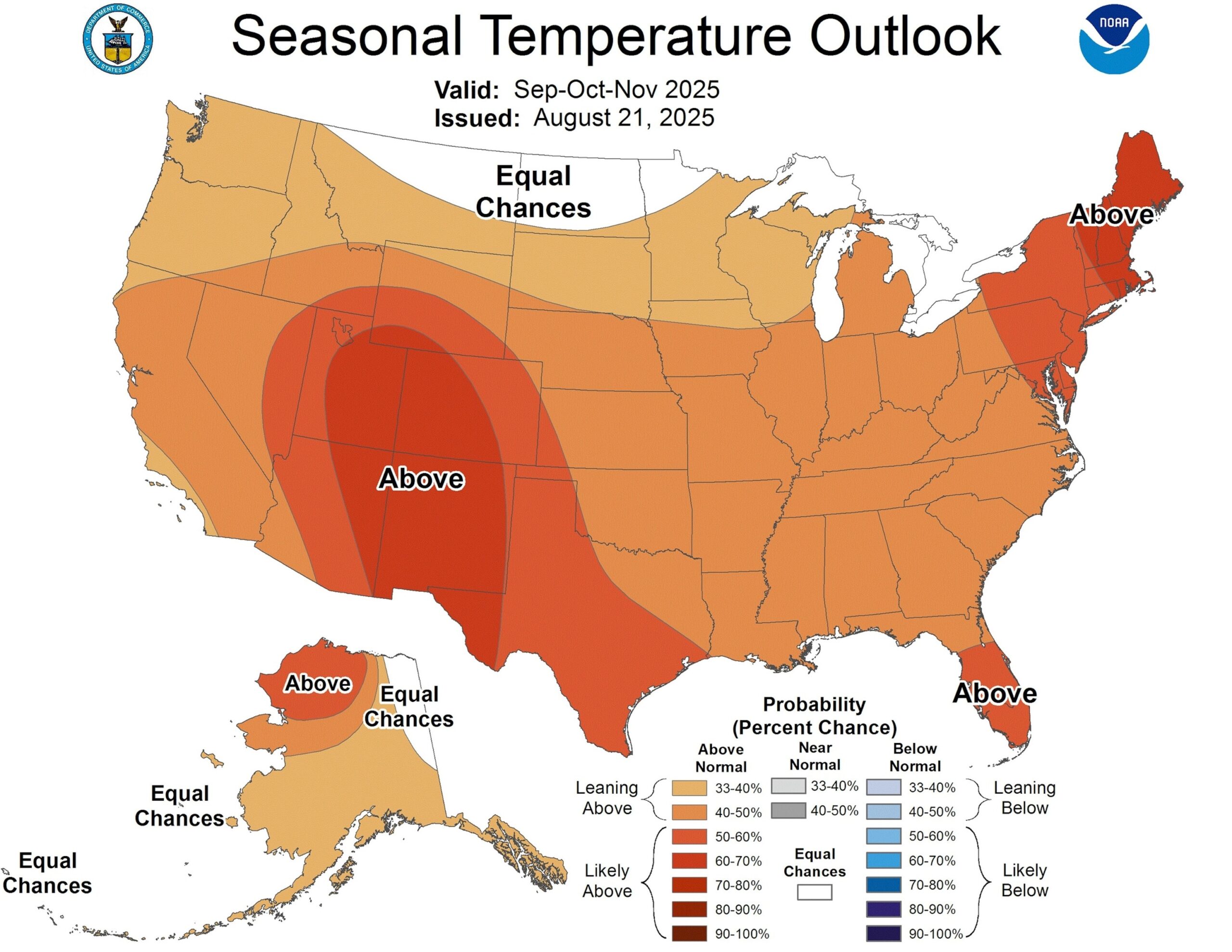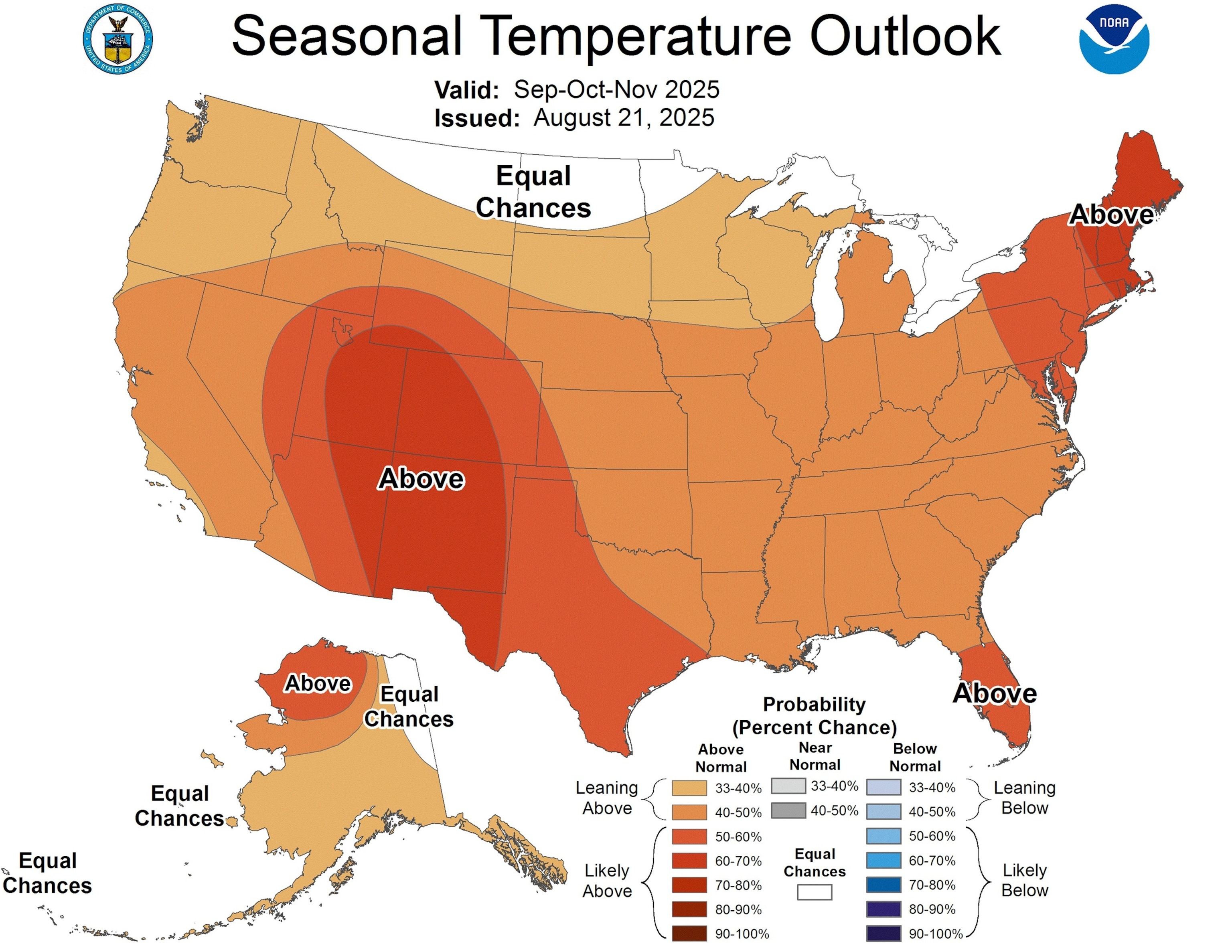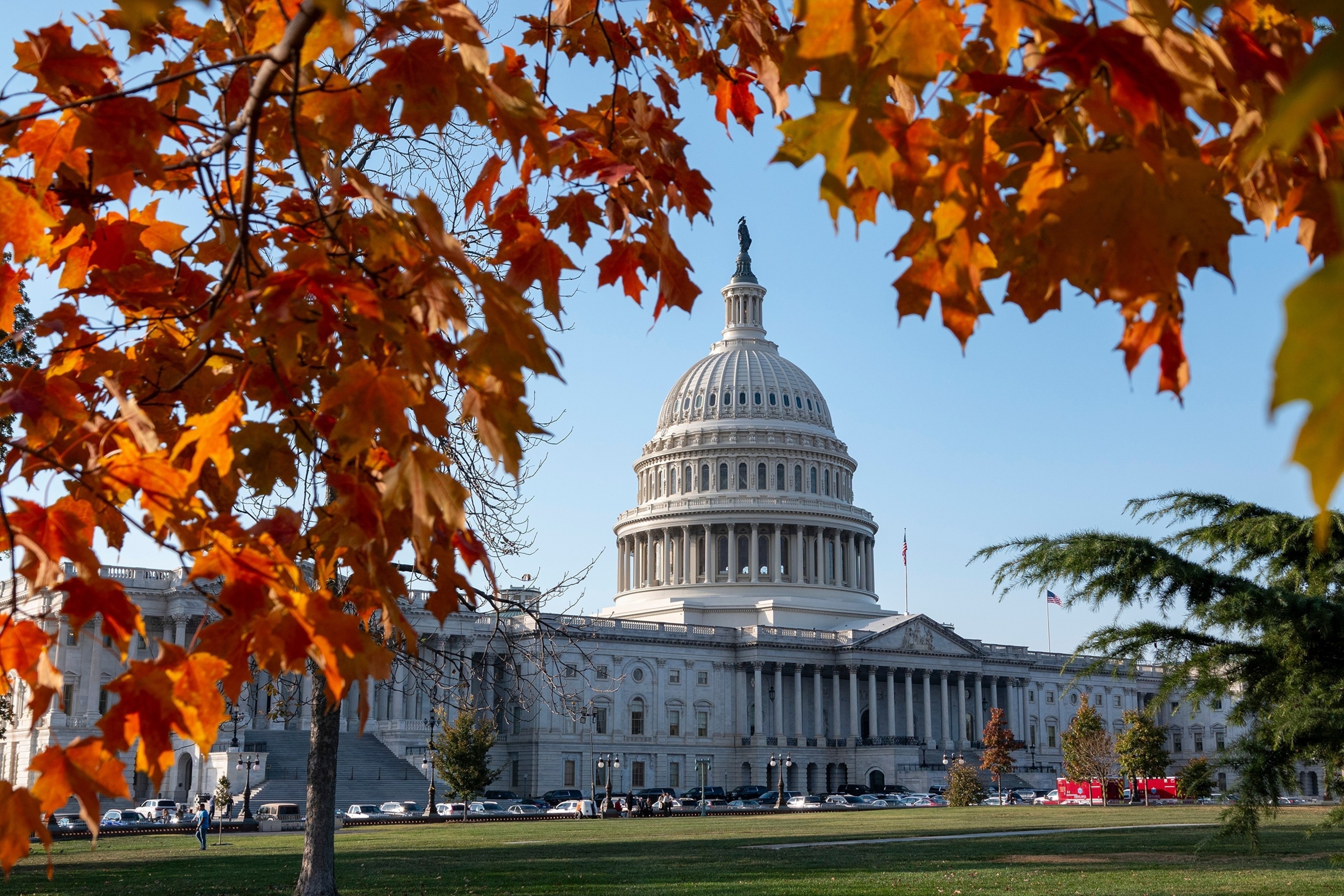Fall forecast 2025: What to know since most of us prepare for a warmer fall

The last perspective of the autumn season of the Oceanic and Atmospheric National Administration (NOAA) is out, and is asking for temperate and possibly hot conditions for much of the country in autumn.
The seasonal perspective of the NOAA climate prediction center forecasts whether parts of the country will be above, below or almost average for parts of the country for meteorological autumn, from September to November.
NOAA’s perspective puts much of the country with a greater possibility of a warmer fall than normal, with the greatest possibility of warmer temperatures than the average in the southwest and New England. This means that the majority of the country will probably be softer than is generally expected from September to November.

The seasonal temperature perspective of the Oceanic and Atmospheric National Administration (NOAA) suggests that a large part of the US will see Balsá and possibly hot conditions.
NOAA
However, this perspective does not forecast variations that occur for days, weeks or more than a month, but how the general average would be seen.
September in a particular region could present typical autumn conditions, but October and November could end well above normal, balancing the average of three months to higher than normal throughout the season. What the perspective for a specific local area means depending on the typical climate around it.
For example, the high average temperatures for Phoenix, one of the most popular cities in the country, vary from 104 degrees at the beginning of the fall to 70 degrees towards the end of autumn. New York City varies from 76 degrees at the beginning of autumn at 54 degrees until November.
While the seasonal perspective highlights what is probably for the fall and where it is likely to be an abnormal heat, it does not say where no extreme heat would be or how long it would be. Nor does it say where any drastic prioress would be or for how long, if any.
What previous falls have taught us
According to the Environmental Protection Agency and NOAA, it falls in the United States They have been warming me since the beginning of 1900with the last warmer falls than the average of 30 years.

The United States Capitol is surrounded by colorful leaves during a warm autumn day on November 7, 2023 in Washington DC.
Kevin Carter/Getty Images
NOAA also reported that autumn 2024 was The warmest on average for the country in 130 yearswith more than half of all US states. They are classified between the three warmest falls.
What does a warmer fall mean to you?
A warmer fall has more impacts than simply keeping the warmer climate and stopping in the winter jackets. According to Central Climate, the warmer falls can prolong the potentially dangerous summer heat and Increase demand and cooling cost during the warmer autumn days.
Central Climate also found that the warmest falls extend growth and allergy seasonsas well as him Forest fire season for the West.

The United States Capitol is reflected on an sidewalk on the West Front on the day the Senate returned from the recess of August on Tuesday, September 6, 2022.
Tom Williams/CQ-Roll Call, INC through Getty Images
Extended warmth affects autumn foliage, a natural show that dazzles each fall and increases local tourism. According to Columbia University, the warmer falls You can delay the beginning of changing the leavesshorten the autumn foliage season in general, and reduces the vitality and color of the color of autumn foliage.
Why so warm?
A large part of what the forecasts seek when predicting the temperature, and even their perspective of seasonal precipitation, are climatic patterns in the Pacific Ocean. The most influential that the forecast look is the oscillation the child-south (Enso). The Enso is a natural variation of the warmest, neutral and colder waters along the Ecuadorian Pacific Waters.
This natural variation is one of the greatest driving forces of large -scale climatic patterns on the Pacific Ocean, and finally on North America.
The forecasts in the Climate Prediction Center expect the Enso to change from a neutral pattern to a colder pattern, or the Nina, in November. This would probably put the United States in a dominant climate pattern for much of the fall that sees that the southern half of the country experiences a drier and warmer climate, while the Northwest Pacific valley and the Ohio valley will have more humid conditions than normal.







